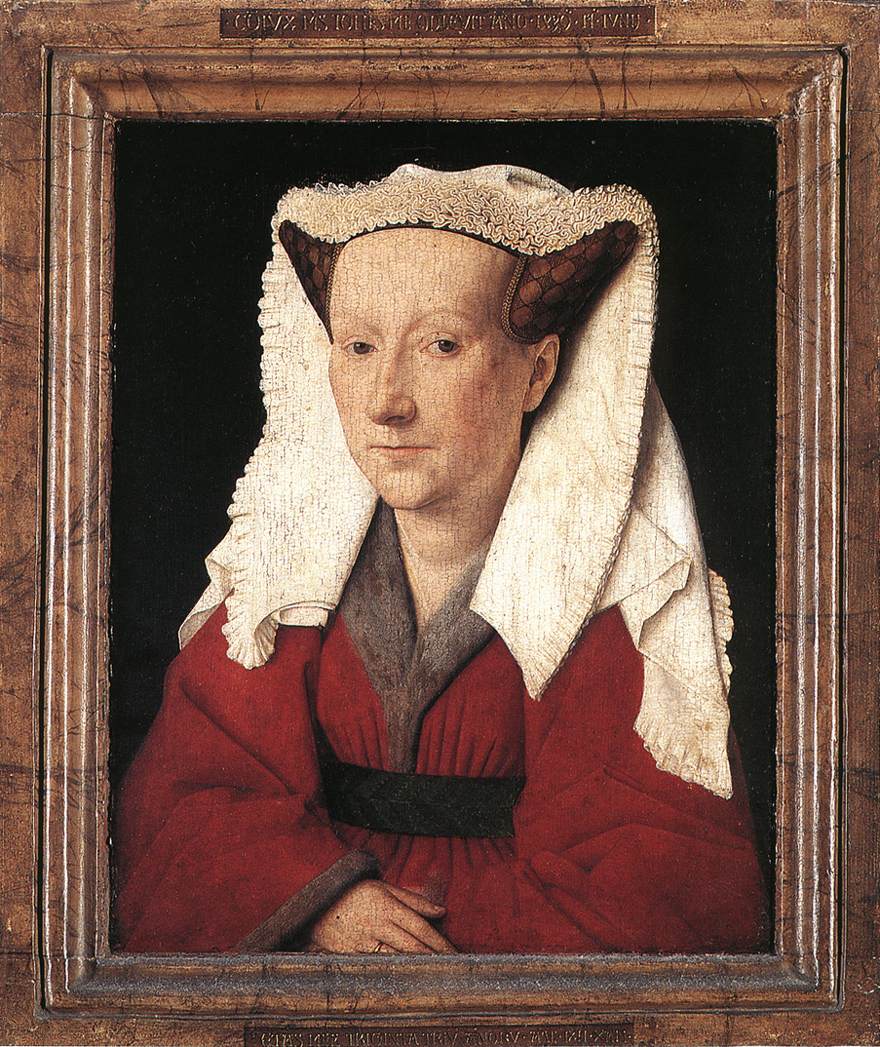Description
The Portrait of Margaret van Eyck, also known as the Fountain Madonna, is a painting by the Flemish artist Jan Van Eyck dating from the year 1439. This late Renaissance masterpiece is one of the artist's most prominent pieces and is located in the collection of the Groeninge Museum in Bruges, Belgium.
The first thing that draws the attention of this painting is the beauty and delicacy of the female figure that appears in the center of the painting. Margaret van Eyck, the artist's brother's wife, is depicted with great precision and realism in her red velvet dress and golden headdress. The light that illuminates her face and her figure seems to come from a source located behind her, which gives an effect of depth and three-dimensionality to the work.
Jan Van Eyck's artistic style is characterized by his attention to detail and his oil painting technique, which allowed him to create highly realistic light and shadow effects. In the Portrait of Margaret van Eyck, this technique can be seen in the texture of the fabrics and in the details of the jewelry and the headdress of the female figure.
The composition of the painting is also very interesting, since the figure of Margaret van Eyck is in the center of the painting, surrounded by a natural landscape that includes a fountain, a tree and a cobbled path. This composition symbolizes the connection between nature and the human figure, and reflects the humanist vision of the Renaissance.
As for colour, the intense red of Margaret van Eyck's dress contrasts with the dark green of the landscape and the blue of the sky, creating a very effective chromatic harmony. In addition, the use of light and shadows brings a sense of depth and volume to the work.
The history of the painting is also very interesting, as it is believed to have been a gift from Jan Van Eyck to his wife, Marguerite, on their third wedding anniversary. This personal detail adds sentimental value to the work and makes it a unique piece in the history of art.
In short, the Portrait of Margaret van Eyck is a late Renaissance masterpiece that stands out for its oil painting technique, its attention to detail, its symbolic composition and its chromatic harmony. In addition, his personal story adds sentimental value and makes it a unique and unforgettable work.

